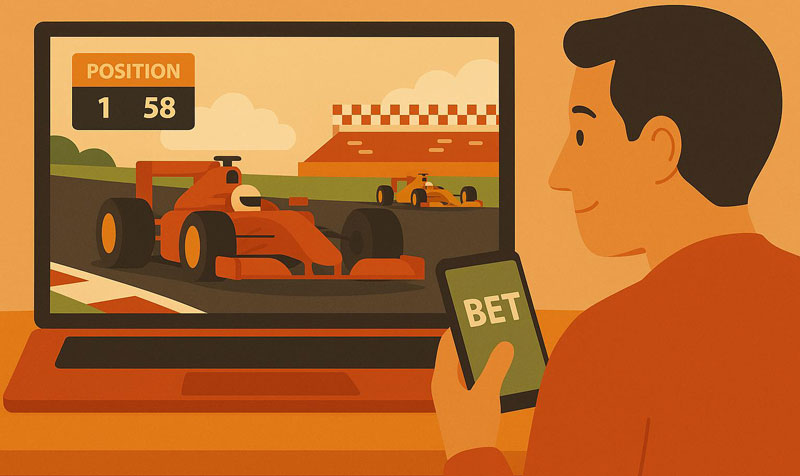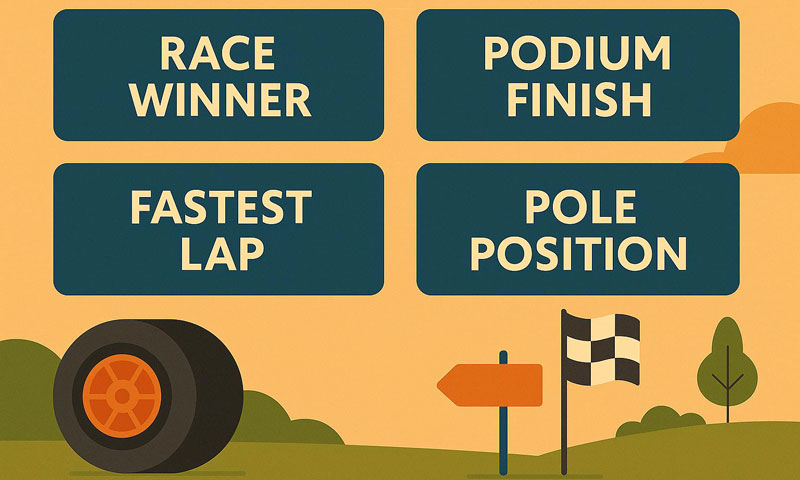Beginner's Guide to Formula 1 Betting
Formula 1, or F1, is one of the most thrilling sports in the world. With high-speed racing, elite engineering, and fierce rivalries, it's no wonder betting on F1 has become increasingly popular. Whether you're following the Grand Prix calendar or just getting into motorsport, this guide will walk you through how Formula 1 betting works, the key markets, practical examples, and smart tips to help you get started with confidence.

1. How Formula 1 Works
Formula 1 is a global motorsport series that features ten teams and twenty drivers competing in races known as Grand Prix events. Each race weekend consists of practice sessions, qualifying, and the main race. Points are awarded based on finishing positions, and the season ends with championships for both drivers and teams.
When betting on F1, you're not just limited to picking who wins. There are dozens of markets to choose from each race weekend.
2. Key Formula 1 Betting Markets
Here are the most common and beginner-friendly betting options available for F1 races:
1. Race Winner
Betting on the driver who will win the race.
Example:
-
Max Verstappen: 1.75
-
Charles Leclerc: 6.50
-
Lewis Hamilton: 8.00
A €20 bet on Hamilton would return €160 if he wins.
2. Podium Finish
Bet on a driver to finish in the top three. This is a safer alternative to picking the outright winner.
Example:
-
Sergio Perez to finish on the podium: 2.20
-
Fernando Alonso to finish on the podium: 3.40
3. Fastest Lap
Bet on which driver will record the fastest lap during the race.
Example:
-
George Russell: 4.50
-
Carlos Sainz: 6.00
4. Pole Position
Betting on the driver who qualifies in first place before the race. Qualifying happens on Saturday for most Grand Prix events.
5. Head-to-Head Matchups
Bookmakers pair two drivers, and you bet on which one finishes higher.
Example:
-
Norris vs Gasly
-
Norris: 1.85
-
Gasly: 1.95
Bet €10 on Norris and win €18.50 if he finishes ahead of Gasly.
6. Safety Car to Appear
This bet is about whether a safety car will be deployed during the race.
-
Yes: 1.40
-
No: 2.75
7. Team to Score Most Points
Pick which constructor will earn the most combined points in a specific race.
3. Practical Example
Event: Italian Grand Prix
You place the following bets:
-
€15 on Carlos Sainz to finish on the podium at 3.20
-
€10 on Norris to beat Alonso at 1.85
-
€5 on fastest lap for Russell at 5.00
If all three come through:
-
Podium bet returns €48
-
Head-to-head returns €18.50
-
Fastest lap returns €25
-
Total payout: €91.50 from €30 in stakes
4. 7 Tips for Betting on Formula 1

1. Follow qualifying results closely
Qualifying position strongly influences race performance. Starting at the front gives a big edge.
2. Consider team reliability
Some teams have excellent pace but unreliable cars. Know who is likely to finish clean races.
3. Study track history
Certain drivers perform better on specific tracks. Hamilton, for example, is historically strong at Silverstone.
4. Watch for weather
Rain changes everything. Wet races often lead to unpredictable results, safety cars, and surprise podiums.
5. Don't ignore midfield battles
Value is often found betting on matchups or top 6 finishes rather than just picking the winner.
6. Look at team strategy trends
Teams differ in how aggressive they are with pit stops or tyre choices. This affects outcomes, especially for fastest lap markets.
7. Track upgrades and penalties
Teams bring updates throughout the season. Also keep an eye on grid penalties for engine changes or infractions.
5. Conclusion
Formula 1 offers more than just high-octane racing—it’s a rich betting environment full of data, trends, and unique angles. Whether you're backing a race winner or betting on team performance, smart research and a cool head can give you a competitive edge. Stick to the markets you understand best and gradually expand as you gain more experience with the sport and its rhythms.

